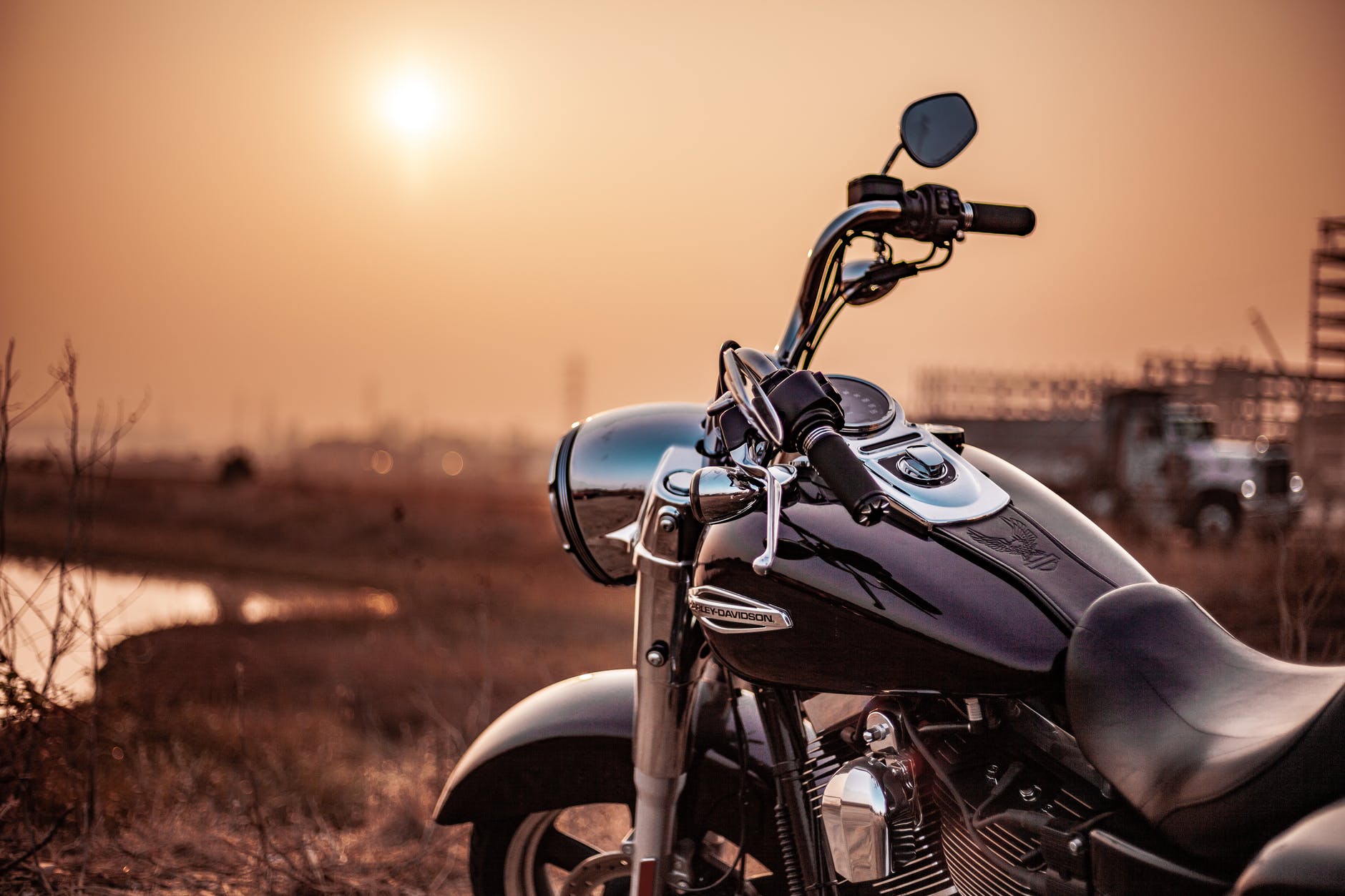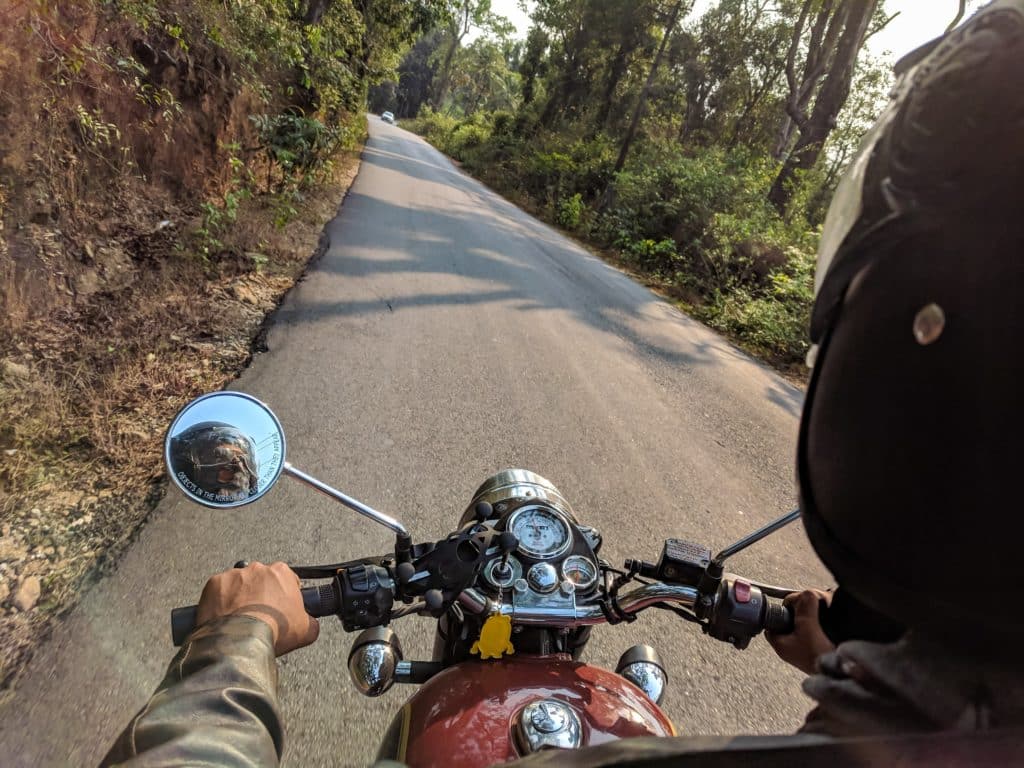Introduction
Deciphering Motorcycle Safety: Finding Equilibrium Between Risk and Reward
Are Motorcycles Dangerous? Motorcycles exhilarate and entice, offering a freedom unmatched by any other mode of transportation. However, this liberating experience comes with inherent risks that cannot be ignored. As a concerned parent or an avid motorcyclist, it is crucial to understand the dangers associated with riding a motorcycle and explore ways to manage personal risk effectively.
Balancing Act: Embracing the Question of Motorcycle Safety
- Driving While Impaired: Riding a motorcycle demands more skill and focus than driving a car. To ensure safety, it is paramount to avoid riding while under the influence of drugs or alcohol. Impairment can significantly hinder judgment, reaction time, and coordination, increasing the probability of accidents and severe injuries.
- Risk Assessment: Riders often evaluate the level of risk associated with various riding activities by weighing the potential benefits against the potential negative outcomes. However, it is vital to note that not all motorcycle riders engage in high-risk behaviors. Individual risk-taking tendencies can vary based on factors such as experience, training, and self-regulation skills.
- Moderating Risk-Taking Behaviors: The adoption of safer riding practices can result from developing experience, undergoing proper training, and acquiring self-regulation skills. These factors contribute to a more measured approach to risk-taking and help in making informed decisions on the road.
- Personal Protective Equipment (PPE): Utilizing appropriate PPE, such as helmets, gloves, jackets, and boots, is crucial for minimizing injuries in case of accidents. Proper gear can provide vital protection against head trauma, road rash, and broken bones.
By understanding the risks involved in motorcycle riding and embracing strategies to manage personal danger levels, riders can strike a balance between the thrill of the ride and ensuring their safety. While discouraging someone from pursuing their passion may not always be effective, providing scientifically-supported tactics can assist in creating a safer riding environment. Remember, it is essential to respect the road, prioritize safety, and enjoy the ride responsibly.
Understanding the Risks
1. The Reality of Motorcycle Safety
Motorcycles exhilarate and entice, offering a freedom unmatched by any other mode of transportation. However, this liberating experience comes with inherent risks that cannot be ignored. As a concerned parent or an avid motorcyclist, it is crucial to understand the dangers associated with riding a motorcycle and explore ways to manage personal risk effectively.
2. The Statistics: Comparing Motorcycle and Car Safety
The majority of riders will assure you that riding a motorcycle is no more dangerous than driving any other type of motor vehicle. While it is undeniable that accidents do happen when riding a motorcycle, it is essential to put these risks into perspective. According to the National Highway Traffic Safety Administration (NHTSA), in 2019, the number of fatalities per mile traveled was nearly 28 times higher for motorcycles compared to cars.
However, it is important to note that these statistics do not tell the whole story. Motorcycle accidents are often more severe and result in greater injuries or fatalities compared to car accidents. The lack of protective barriers on motorcycles leaves riders more vulnerable to injury in the event of a crash. Understanding these risks can help riders take the necessary precautions to stay safe on the road.
Some key factors that contribute to motorcycle accidents and injuries include:
- Driving While Impaired: Riding a motorcycle demands more skill and focus than driving a car. To ensure safety, it is paramount to avoid riding while under the influence of drugs or alcohol. Impairment can significantly hinder judgment, reaction time, and coordination, increasing the probability of accidents and severe injuries.
- Risk Assessment: Riders often evaluate the level of risk associated with various riding activities by weighing the potential benefits against the potential negative outcomes. However, it is vital to note that not all motorcycle riders engage in high-risk behaviors. Individual risk-taking tendencies can vary based on factors such as experience, training, and self-regulation skills.
- Moderating Risk-Taking Behaviors: The adoption of safer riding practices can result from developing experience, undergoing proper training, and acquiring self-regulation skills. These factors contribute to a more measured approach to risk-taking and help in making informed decisions on the road.
- Personal Protective Equipment (PPE): Utilizing appropriate PPE, such as helmets, gloves, jackets, and boots, is crucial for minimizing injuries in case of accidents. Proper gear can provide vital protection against head trauma, road rash, and broken bones.
By understanding the risks involved in motorcycle riding and embracing strategies to manage personal danger levels, riders can strike a balance between the thrill of the ride and ensuring their safety. While discouraging someone from pursuing their passion may not always be effective, providing scientifically-supported tactics can assist in creating a safer riding environment. Remember, it is essential to respect the road, prioritize safety, and enjoy the ride responsibly.
Factors Contributing to Motorcycle Risks
1. Speed and Maneuverability
Motorcycles are known for their speed and maneuverability, which can be appealing to riders. However, these very characteristics also contribute to increased risks on the road. Motorcycles can quickly accelerate and reach high speeds, which increases the chances of accidents if not maneuvered carefully. Additionally, the smaller size of motorcycles allows them to navigate through traffic more easily, but it also makes them less visible to other drivers, leading to a higher risk of collisions.
2. Lack of Physical Protection
Unlike cars that have protective structures, such as airbags and seat belts, motorcycles provide minimal physical protection to riders. In the event of a collision, motorcyclists are at a higher risk of serious injuries or fatalities compared to car occupants. Without the protective enclosure of a car, riders are vulnerable to direct impact with other vehicles, obstacles, or the road surface. This lack of physical protection highlights the importance of wearing proper safety gear, such as helmets, gloves, jackets, and boots, to minimize injuries.
Overall, being aware of the risks associated with riding motorcycles and taking necessary precautions can significantly enhance safety on the road. Motorcyclists should practice safe riding techniques, undergo proper training, and wear appropriate safety gear to mitigate the potential hazards. Additionally, drivers of other vehicles should be vigilant and watch out for motorcycles, keeping an eye out for their smaller size and possible blind spots. By working together, both riders and drivers can create a safer environment for everyone on the road.
Mitigating the Risks
1. The Importance of Safety Gear
Riding a motorcycle comes with inherent risks, but taking precautions can greatly reduce those risks. One of the most vital precautions is wearing proper safety gear. Helmets, gloves, jackets, and boots are essential to protecting riders in the event of a crash. These items provide a layer of physical protection that motorcycles lack, minimizing the risk of severe injuries or fatalities. Motorcyclists should invest in high-quality safety gear and ensure they wear it every time they ride.
2. Adhering to the Rules of the Road
Following traffic rules and regulations is crucial for all road users, including motorcyclists. A significant factor in motorcycle accidents is the decision to disregard traffic laws or engage in risky riding behavior. By obeying speed limits, using turn signals, and maintaining a safe distance from other vehicles, motorcyclists can significantly reduce the likelihood of accidents. It is also essential to be mindful of potential distractions, such as mobile devices or loud music, and avoid using them while riding.
In conclusion, riding a motorcycle poses higher risks compared to driving a car due to factors like speed, maneuverability, and lack of physical protection. However, by being proactive and taking necessary precautions, riders can mitigate these risks. Wearing proper safety gear, such as helmets and protective clothing, is crucial in minimizing the severity of injuries in case of a crash. Additionally, following traffic rules and staying attentive on the road significantly enhances safety for both motorcyclists and other drivers. By understanding and respecting the risks associated with motorcycling, riders can enjoy their time on two wheels while prioritizing their safety.
Weighing the Rewards
1. Freedom and Adventure
Riding a motorcycle offers a sense of freedom and adventure that is unmatched by any other form of transportation. The open road stretching out before you, the wind in your hair, and the rumble of the engine create an exhilarating experience that car drivers can only dream of. The ability to weave through traffic and take scenic routes adds another layer of excitement to the journey. For those seeking an adrenaline rush and a break from the monotony of daily life, motorcycle riding provides the perfect escape.
2. Cost-Efficiency and Environmental Benefits
Motorcycles are generally more fuel-efficient than cars, making them an attractive option for those looking to save money on transportation costs. With rising fuel prices, the cost-efficiency of motorcycles is a significant advantage. In addition, motorcycles have a smaller carbon footprint compared to cars, as they consume less fuel and emit fewer greenhouse gases. Choosing a motorcycle over a car not only saves money but also contributes to a cleaner and greener environment.
However, it is important to acknowledge the risks associated with motorcycle riding and take appropriate precautions to mitigate them. The lack of physical protection, higher vulnerability to accidents, and potential for severe injuries are significant factors that riders must consider.
Mitigating the Risks
1. The Importance of Safety Gear
Riding a motorcycle comes with inherent risks, but taking precautions can greatly reduce those risks. One of the most vital precautions is wearing proper safety gear. Helmets, gloves, jackets, and boots are essential to protecting riders in the event of a crash. These items provide a layer of physical protection that motorcycles lack, minimizing the risk of severe injuries or fatalities. Motorcyclists should invest in high-quality safety gear and ensure they wear it every time they ride.
2. Adhering to the Rules of the Road
Following traffic rules and regulations is crucial for all road users, including motorcyclists. A significant factor in motorcycle accidents is the decision to disregard traffic laws or engage in risky riding behavior. By obeying speed limits, using turn signals, and maintaining a safe distance from other vehicles, motorcyclists can significantly reduce the likelihood of accidents. It is also essential to be mindful of potential distractions, such as mobile devices or loud music, and avoid using them while riding.
In conclusion, riding a motorcycle offers a unique blend of adventure, freedom, and cost-efficiency. However, it is essential to weigh these rewards against the associated risks. By being proactive and taking necessary precautions, such as wearing proper safety gear and adhering to traffic rules, riders can enjoy the benefits of motorcycle riding while prioritizing their safety.
Personal Responsibility
1. Knowing Your Limits
It is crucial for motorcycle riders to understand their limitations and skill level as motorcyclists. Even though you may have a high-performance motorcycle, pushing beyond your abilities can be dangerous. Inexperienced riders, in particular, need to be cautious when choosing a motorcycle that matches their skill level. Opting for smaller and less powerful bikes can help promote safer riding behavior and minimize the risk of accidents.
2. Continuous Skill Development
Riding a motorcycle requires a unique set of skills that can only be honed through practice and experience. To mitigate the risks associated with motorcycle riding, it is essential for riders to prioritize continuous skill development. Taking part in motorcycle training courses can significantly enhance riding capabilities and improve overall safety on the road. These courses provide riders with valuable knowledge, techniques, and strategies to handle different riding situations effectively.
Riding a motorcycle may come with risks, but these risks can be managed through personal responsibility. By knowing their limits and continuously developing their riding skills, motorcyclists can significantly reduce the chances of accidents and injuries. It is important to remember that the sense of freedom and adventure that riding a motorcycle offers can be enjoyed while prioritizing safety.
Conclusion
Finding the Right Balance: The Decision to Ride a Motorcycle
Riding a motorcycle is a thrilling and exhilarating experience, but it also comes with inherent risks. It is crucial for riders to find the right balance between enjoying the freedom and adventure of riding while prioritizing safety. Taking personal responsibility is key to ensuring a safe and enjoyable riding experience.
Additional Resources: Safety Courses and Organizations
To help riders enhance their skills and knowledge, motorcycle safety courses are available for riders of all experience levels. These courses teach the fundamentals of operating a bike and provide valuable insights on handling different riding situations. By enrolling in such courses, riders can continuously develop their skills and significantly improve their overall safety on the road.
In addition to safety courses, there are various organizations and resources available to support motorcycle safety. These organizations provide information, advocacy, and resources aimed at promoting safe riding practices and reducing the number of accidents and injuries. Riders can consider joining these organizations to stay updated on safety guidelines, participate in events and community activities, and connect with fellow riders who share a passion for safe riding.
In conclusion, riding a motorcycle comes with risks, but by practicing personal responsibility, riders can mitigate these risks and enjoy a safe riding experience. Understanding one’s limits, continuously developing skills, and availing of safety courses and resources are essential steps towards promoting safer riding behavior. By prioritizing safety without compromising on the thrill of the ride, riders can find the perfect balance and fully embrace the joy of motorcycle riding.
FAQ: Are Motorcycles Dangerous? Weighing the Risks and Rewards of Riding Motorcycles
Q: Are motorcycles more dangerous than cars?
A: Statistically, motorcycles do have a higher fatality rate in accidents compared to cars. However, it’s important to note that this doesn’t automatically make motorcycles inherently more dangerous. The risks associated with riding a motorcycle can be mitigated by rider experience, proper training, appropriate safety gear, and responsible riding habits.
Q: What are the main risks involved in riding motorcycles?
A: The main risks associated with riding motorcycles include a lack of physical protection compared to cars, a higher vulnerability to accidents caused by other motorists, reduced visibility, and a higher chance of injury in case of a crash. These risks can be managed by taking appropriate safety measures and practicing defensive riding techniques.
Q: What safety measures can motorcyclists take to mitigate risks?
A: Motorcyclists can significantly reduce the risks involved in riding by wearing proper safety gear, such as helmets, jackets, gloves, and boots specifically designed for motorcycle use. Additionally, taking formal rider training courses, adhering to traffic laws, using reflective gear for visibility, regularly maintaining the motorcycle, and staying alert and focused while riding can all contribute to improved safety on the road.
Q: What are some benefits or rewards of riding motorcycles?
A: Riding motorcycles offers a unique sense of freedom, exhilaration, and a closer connection with the road. Many riders also appreciate the more immersive experience of riding compared to being inside a car. Motorcycles are generally more fuel-efficient than cars, making them a cost-effective mode of transportation. Moreover, motorcycles often provide the advantage of easier maneuverability and parking in congested areas.
Q: Are there any strategies to minimize the risk of accidents caused by other motorists?
A: Yes, motorcyclists can take several precautions to minimize the risk of accidents caused by other motorists. These include wearing brightly colored or reflective clothing, staying in well-lit areas, using hand signals and proper lane positioning when turning or changing lanes, anticipating potential hazards, maintaining a safe distance from other vehicles, and being aware of blind spots.
Q: What should new riders consider before starting to ride motorcycles?
A: New riders should consider taking a formal rider training course to learn essential skills and gain confidence before hitting the road. It’s important to choose a motorcycle that suits their skill level and physical abilities. Acquiring the necessary safety gear and understanding local traffic laws are also crucial. Lastly, new riders should constantly seek to improve their riding skills and knowledge by staying up to date with training and awareness programs.
In summary, while there are inherent risks associated with riding motorcycles, they can be effectively managed through proper training, responsible riding habits, and appropriate safety gear. By weighing the potential risks against the rewards, individuals can make informed decisions about whether riding motorcycles is right for them.

David Williams is an author with a passion for motorcycles and all things related to the world of two-wheeled vehicles. His expertise is evident on his website, The Moto Expert, where he shares his knowledge and insights with fellow enthusiasts. Follow him on social media to stay up-to-date on the latest motorcycle news, reviews, and trends. Whether you’re a seasoned rider or just starting out, David’s content is sure to inform and entertain. Join his community and become a part of the conversation today.






